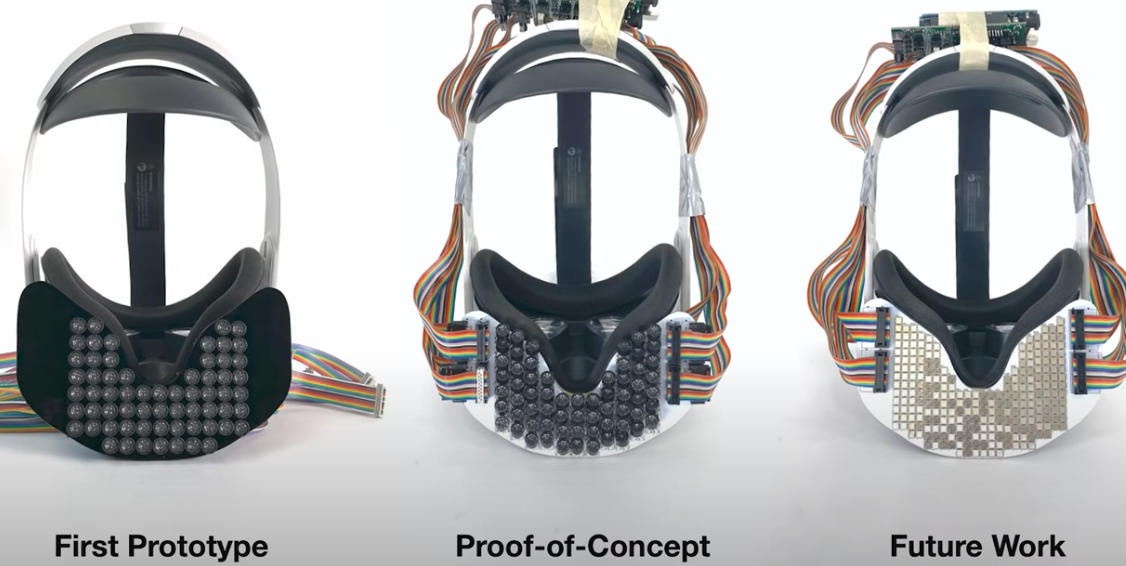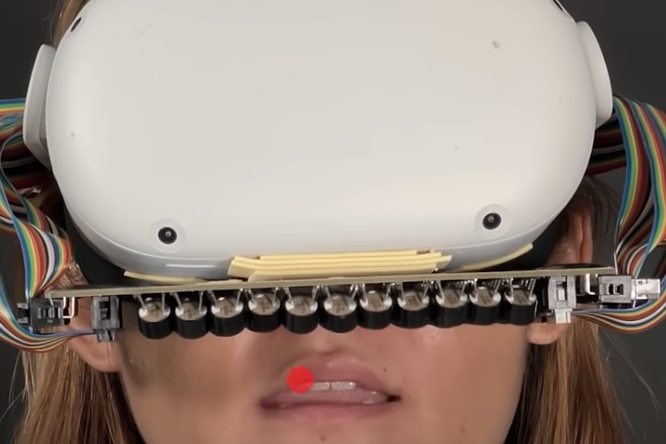In virtual reality, and on our smartphone devices, haptic feedback technology enhances our experience. Whether we feel more in touch with our phones as we push against a plastic screen or we feel a finger press our chest, haptic feedback transcends virtual reality experiences.
Haptic feedback is most popular on our phones. When you press a button during a text or email, you get a little vibration kickback that sort of makes you feel as if you’re pressing an actual button.
Some of us shut haptic feedback on our phone off (raises hand).
Some of us dig it (dramatically lowers hand).
The major takeaway here? Haptic feedback is most notably associated with fingers.
But what about our mouths? What could haptic feedback attached to our mouths be used for?
Probably a lot, actually.
Haptic feedback works as effectively as the receptor nerve spacing in particular parts of the body operate.
The fingertips and the palm remain top tier receptor nerve hotbeds. In other words, haptic feedback works magic in those areas. Hence why haptic feedback is so popular with smartphone devices and gaming controllers.
But, according to Future Interfaces Group, a Carnegie Mellon University Human-Computer Interaction Institute, we can go beyond the hands in these experiences.
Enter, your mouth. Well, everyone’s mouths, actually.
FIG believes that haptic feedback via the mouth is a next big thing and that it can enhance virtual reality experiences. They’ve created several prototypes and concepts that help support their idea.

Most odd, the device doesn’t attach directly to the lips; rather, it sends pulses through the air which target the lips.
You can see here in an example from FIG’s “Mouth Haptics in VR using a Headset Ultrasound Phased Array” Youtube video.

Now, these pulses can be felt on the lips, teeth, tongue, and gums.
Come on, we all see where this is going, don’t we?
Well, apparently FIG either doesn’t, or chooses to ignore what’s on all our minds. The use-case example they give in their video is a girl walking through a jungle at night when suddenly, a spider races across her lips.
Cool story bro.
But let’s be honest, we all want to know if this device can help enhance our virtual reality romance. You know, like kissing.

“can i kiss my homies in vrchat with this,” one Youtube commenter wrote.
“We all know what this will be mainly used for =),” another exclaimed.
I mean, I think we can all agree that mouth haptic feedback technology won’t end up being used for haunted house experiences. At least, not at scale.
Sexually, the mouth is one of the most sensual, provocative exploits, not just for kissing, but for otherwise. And I think we understand what “otherwise” implies. The ability to enhance the oral experience in virtual reality sex would be monumental, to say the absolute least.
I’m sure the academics at Carnegie Melon “get it.” But they just can’t “say it.” That’s all fair, bros.
But one thing is for sure, enhancing the oral region in virtual reality will be a complete game changer. It would take an already immersive experience and double-down.
